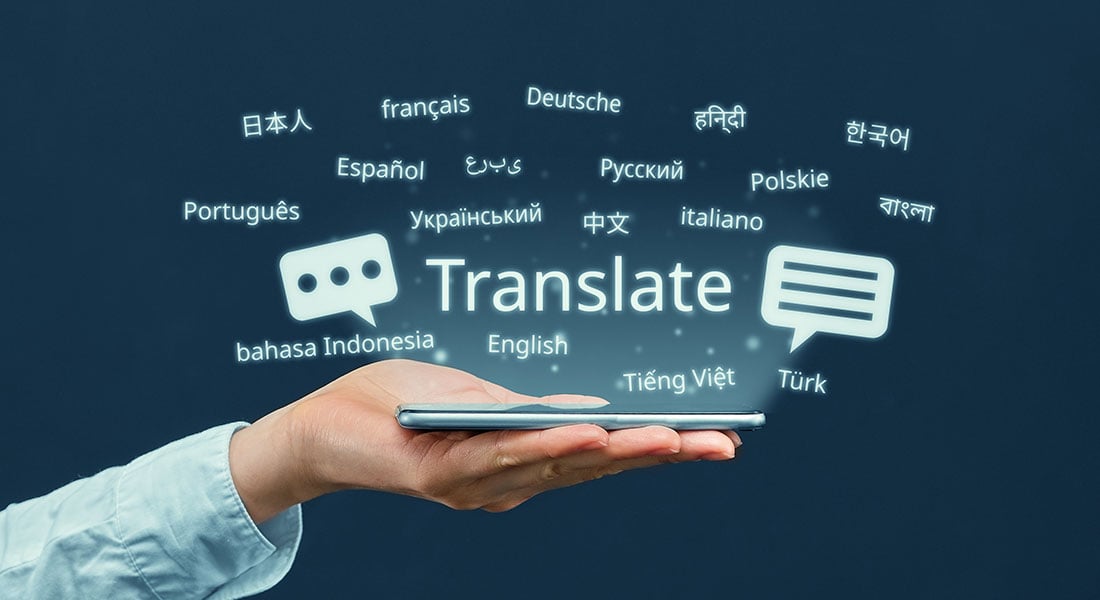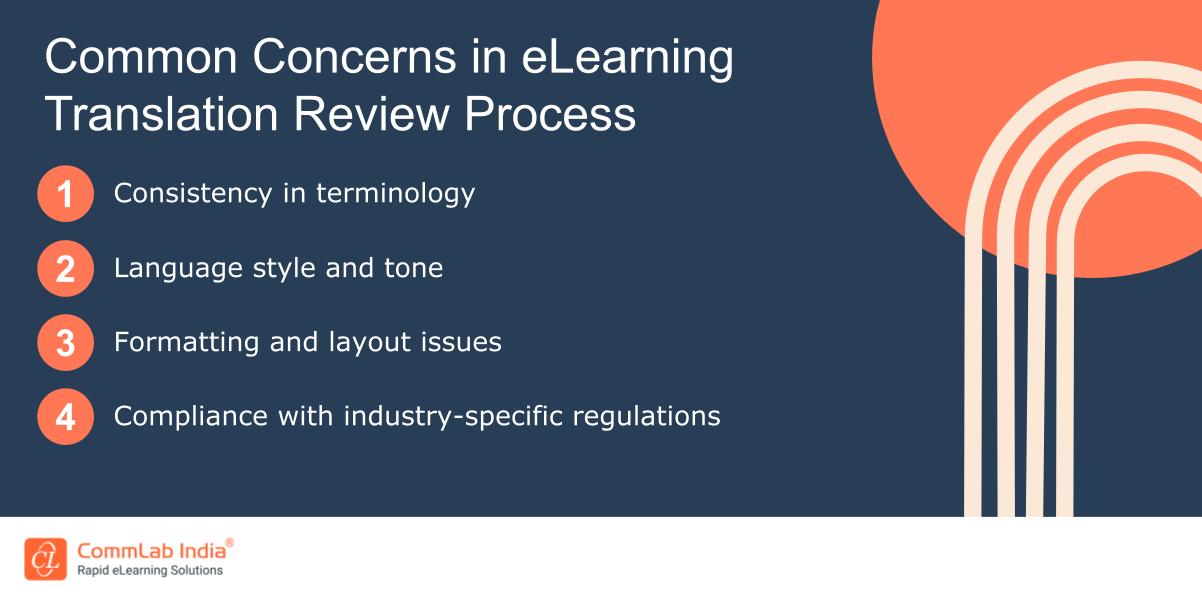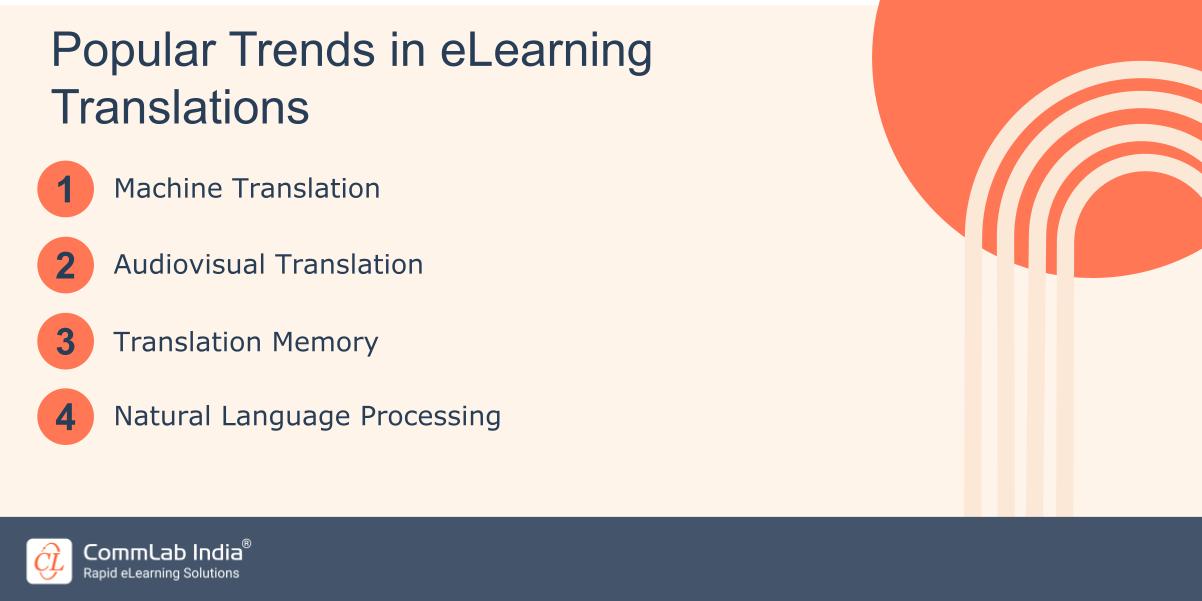Top 6 eLearning Translation Tools for Global and Multilingual Corporate Training
Dive into the future of digital learning with these 6 trending eLearning translation tools. Uncover the key to global learning success now!

In today's rapidly evolving global landscape, the demand for effective eLearning solutions has never been greater. As businesses are continuously looking to expand their reach beyond borders, the need for seamless and accurate eLearning translations has surged to the forefront of the digital learning revolution. In this blog, we'll explore the 6 trending eLearning translation tools and how they are reshaping the way we bridge linguistic and cultural barriers in the world of corporate training.
Take Your eLearning Translations to a New Level!
Here are a few tools to explore -
- Smartling
- Google Translate
- Amazon Translate
- MemoQ
- Taia
- Transifex
Top 6 eLearning Translation Tools in 2023
1. Smartling
Smartling is a cloud-based translation management system and localization platform used by businesses and organizations to streamline the process of translating digital content, including websites, mobile apps, and eLearning materials. Smartling allows users to manage and automate the translation of digital content into multiple languages, ensuring consistency and accuracy across various platforms. The platform utilizes translation memory technology to store and reuse previously translated content, reducing translation costs and improving efficiency.
Smartling enables collaboration among translation teams, providing tools for translators, editors, and project managers to work together in real time. It offers integrations with learning management systems (LMS) and other digital platforms, making it easier to translate and update content directly from within these systems. Smartling provides customizable workflows to automate the translation and localization process, helping organizations minimize their efforts.
2. Google Translate
Google Translate is a widely recognized machine translation service offered by Google. It provides translation services for text, websites, and even spoken language through its mobile app. It offers a straightforward and user-friendly interface. Users can simply enter text or upload documents for translation. Google Translate supports an extensive range of languages, including both commonly spoken and less widely spoken languages.
Google Translate offers a website integration feature that allows website owners to provide translation options for visitors. This is beneficial for businesses and organizations looking to make their content accessible to a global audience. While Google Translate is convenient, it's important to note that the quality of eLearning translations can vary, especially for complex or nuanced content. It may not always provide highly accurate or contextually appropriate translations, which can be a limitation for professional or critical translation needs. Here are a few concerns you might face -

3. Amazon Translate
Amazon Translate is part of Amazon Web Services (AWS) and offers cloud-based machine translation services. It's designed for businesses and developers looking to integrate translation capabilities into their applications, websites, or services. Being part of AWS, Amazon Translate is highly scalable. Users can adjust resources based on their translation needs, ensuring flexibility and cost-effectiveness.
→ Download Free eBook: eLearning Translations – 7 FAQs Answered
Amazon Translate allows users to customize their translation models with specific terminology and vocabulary relevant to their industry or domain. This is particularly valuable for businesses operating in specialized fields, such as healthcare or finance. It also supports batch translation, enabling users to translate large volumes of text efficiently. Amazon Translate utilizes neural machine translation (NMT) models, which can provide more accurate and contextually relevant translations compared to older translation technologies.

4. MemoQ
MemoQ is a comprehensive translation management system and computer-assisted translation (CAT) tool. It's used by professional translators and translation agencies to manage translation projects efficiently. One of memoQ's core features is its translation memory (TM) functionality. It stores previously translated segments of text, allowing translators to reuse and maintain consistency across documents. Due to its advanced collaboration features, multiple translators, editors, and project managers can work together on a project simultaneously, sharing resources and maintaining communication within the platform.
Additionally, it includes a terminology management system, which enables users to create and maintain a glossary of industry-specific or company-specific terms. This ensures consistent use of terminology across translations, vital for maintaining brand identity and conveying precise information. MemoQ also offers a range of quality assurance (QA) tools to catch errors and inconsistencies in translations. This includes spell checkers, grammar checkers, and style guides to enhance translation quality.
5. Taia
Taia stands out for its AI-driven approach to translation. It combines machine translation with post-editing capabilities to deliver translations that are not only rapid but also more contextually accurate and human-like in fluency. Taia's AI engine has a strong focus on understanding the context of the text being translated. This allows it to provide translations that take into account nuances and idiomatic expressions, resulting in more natural-sounding translations. Taia supports multiple languages, making it suitable for a wide range of translation needs across different language pairs.
Taia is designed for users who need quick translations without compromising on quality. Its artificial intelligence (AI) engine can process large volumes of text rapidly, making it ideal for tasks like translating emails, reports, or web content in a time-efficient manner. Like Google Translate, Taia offers an intuitive and user-friendly interface, making it accessible to users who may not have specialized translation expertise.
6. Transifex
Transifex is a cloud-based translation management platform designed to simplify the process of translating digital content. It's particularly valuable for businesses and development teams looking to streamline their translation efforts. The platform provides version control features, allowing users to track changes, revisions, and updates to translation projects. This is essential for managing multiple language versions and ensuring translation consistency. Transifex also includes automation features for managing translation workflows. This can include automated file imports and exports, making it easier to keep translations up to date.
Transifex integrates with a wide range of development tools, content management systems (CMS), and source code repositories. This enables developers to seamlessly integrate translation into their existing workflows. Transifex offers a collaborative environment for translation teams. Multiple translators, reviewers, and project managers can work together on translation projects in real time, ensuring efficient collaboration. Like other translation management systems, Transifex utilizes translation memory to store and reuse previously translated content. This ensures consistency and saves time on future translation projects.
Wrapping Up!
In the ever-evolving landscape of eLearning, the quest for seamless global communication is an ongoing journey. As you navigate the eLearning terrain, keep these translation tools in mind. Remember that the choice of tool depends on your unique objectives and the nature of your content. Our commitment to keeping you informed about the latest trends and tools remains unwavering. If you still have doubts regarding eLearning translations, you can check out this eBook and get a few FAQs answered.





